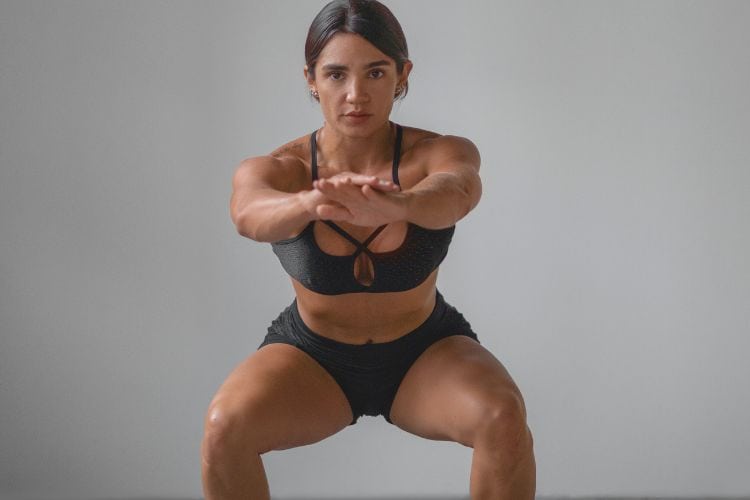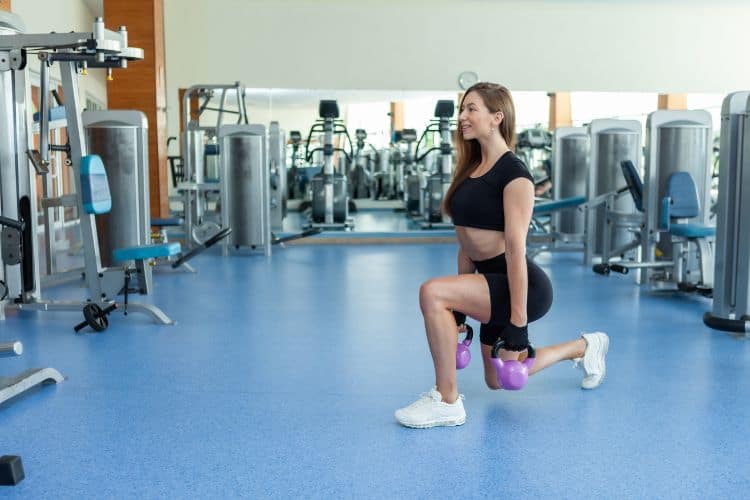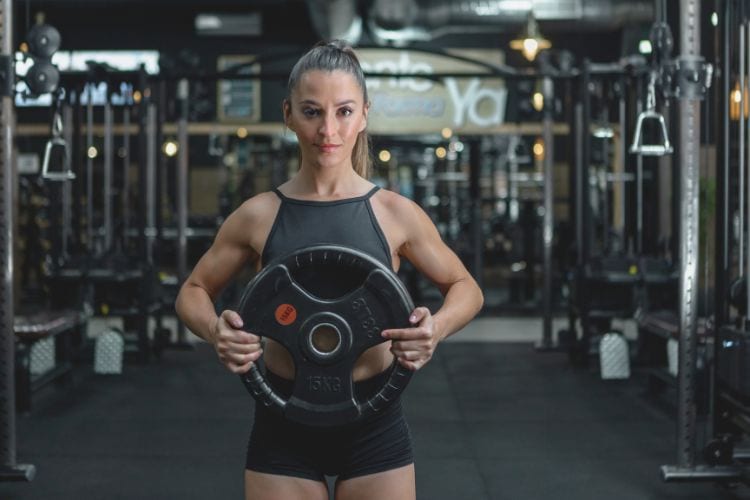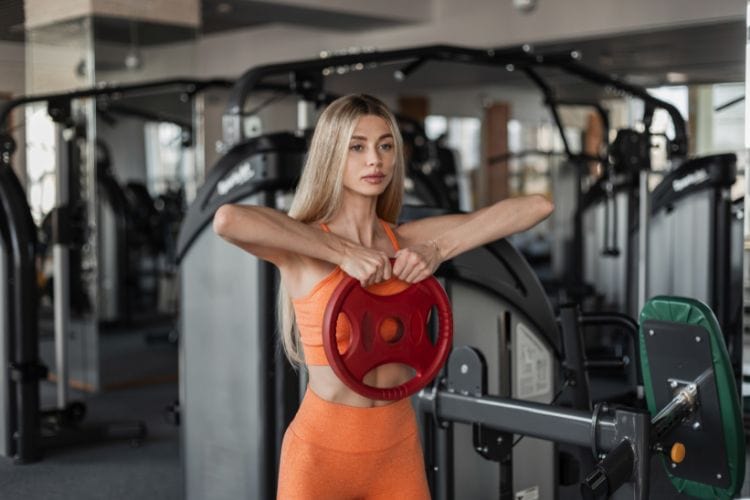Sign up for workout ideas, training advice, reviews of the latest gear and more.






When it comes to building strength, enhancing flexibility, and achieving a toned physique, squats are an unbeatable exercise. Loved by fitness enthusiasts and professionals alike, squats work multiple muscle groups simultaneously, providing a host of benefits for women of all fitness levels. In this comprehensive guide, we’ll delve into the various forms of squats, their benefits, and how to perform them correctly to ensure you reap the maximum rewards from your workout.
Squats are a functional exercise that mimic movements we perform in daily life, such as sitting down and standing up. They primarily target the quadriceps, hamstrings, glutes, and lower back, but also engage the core, calves, and other stabilizing muscles.
Squats are a powerhouse exercise, offering numerous benefits for women, including:
Improved Lower Body Strength: Regularly performing squats helps to build strength in the legs and glutes, making everyday activities easier and reducing the risk of injury.
Enhanced Core Stability: Squats engage the core muscles, helping to improve balance, stability, and posture.
Better Flexibility: Squats require a good range of motion in the hips, knees, and ankles, helping to improve overall flexibility.
Increased Caloric Burn: As a compound exercise that works multiple muscle groups at once, squats can help to boost your metabolism and increase the number of calories you burn.
Toned Legs and Glutes: Squats are renowned for their ability to tone and lift the butt, as well as sculpting the thighs and calves.
There are numerous variations of squats, each with their own unique benefits. Here are some of the best squat exercises for women:
Bodyweight Squats: A great option for beginners, bodyweight squats exercise require no equipment and can be done anywhere.
Goblet Squats: Performed with a dumbbell or kettlebell held at chest height, goblet squats help to improve form and increase the challenge.
Sumo Squats: With a wider stance and toes pointed outwards, sumo squats target the inner thighs and glutes.
Barbell Squats: For those looking to increase strength, barbell squats allow for heavier weights to be used, challenging the muscles even further.
Split Squats: This single-leg squat variation helps to improve balance and stability, while also targeting the quads, hamstrings, and glutes.
Pistol Squats: A challenging bodyweight exercise, pistol squats require significant balance, strength, and flexibility.
Ensuring proper form is crucial when performing squats to prevent injury and ensure maximum effectiveness. Here are some tips for executing the perfect squat:
Start with your feet shoulder-width apart and your toes pointed slightly outwards.
Keep your chest lifted, back straight, and core engaged throughout the movement.
As you lower down, push your hips back and bend your knees, keeping them in line with your feet.
Go as low as your flexibility allows, aiming to get your thighs parallel to the ground or lower.
Push through your heels to stand back up, squeezing your glutes at the top.
Squats exercise can be incorporated into your workout routine in a variety of ways, whether you’re a beginner or more advanced. Start with bodyweight squats, focusing on form, and gradually increase the number of reps and sets as you get stronger. As you progress, you can start to incorporate weighted squats and different variations to continue challenging your muscles.
tips for progression, and addressing common mistakes.
a. Bulgarian Split Squat: This variation is performed with one foot elevated behind you, which intensifies the workout on the front leg. It’s excellent for building unilateral strength and improving balance.
b. Box Squats: This type involves squatting down until your buttocks touch a box or bench behind you. It’s great for beginners to ensure proper depth is achieved, and also helps to build power in the glutes and hamstrings.
c. Jump Squats: Adding a plyometric element to the squat exercise helps to improve explosive power, burn more calories, and increase cardiovascular fitness. Ensure you land softly to protect your joints.
d. Wall Sit: Though not a dynamic squat, wall sits are a form of isometric squat that helps to build endurance in the quads, hamstrings, and glutes.
e. Overhead Squats: Holding a weight overhead while squatting challenges your stability and engages your shoulders and upper back, in addition to the usual leg and glute muscles.
To continue making gains, it’s important to progressively overload your muscles. This can be achieved by:
a. Increasing the Weight: As you get stronger, start incorporating weights into your squat exercise routine, ensuring you maintain proper form.
b. Varying the Reps and Sets: Altering the number of repetitions and sets can help to keep your muscles challenged.
c. Mixing in Different Variations: Incorporate different squat variations to target different muscle groups and prevent boredom.
d. Playing with Tempo: Slow down the descent phase, add a pause at the bottom, or explode up more quickly to challenge your muscles in different ways.
e. Reducing Rest Times: Decreasing the amount of rest between sets can increase the intensity of your workout and improve muscular endurance.
To ensure you reap the full benefits of squats exercise and avoid injury, be mindful of these common mistakes:
a. Not Going Low Enough: Squatting to at least parallel (where your thighs are parallel to the floor) ensures you engage the glutes and hamstrings fully.
b. Letting the Knees Cave In: Ensure your knees stay in line with your feet to protect your joints and engage the correct muscles.
c. Rounding the Back: Keep your chest up and back straight to avoid placing strain on the spine.
d. Lifting the Heels: Ensure your heels stay flat on the ground to maintain balance and engage the right muscles.
e. Rushing the Movement: Perform each squat with control to ensure proper form and muscle engagement.
Squats are a staple in any fitness routine due to their unparalleled ability to build strength, improve flexibility, and tone the lower body. By paying attention to your form, progressively challenging your muscles, and incorporating a variety of squat variations, you can unlock the full potential of this powerful exercise. Whether you’re just starting out or are a seasoned fitness enthusiast, squats are a versatile and effective exercise that can help you achieve your fitness goals. So, embrace the squat, stay consistent, and watch as you transform your strength, stability, and physique. Remember, the road to fitness is a journey, and every squat is a step in the right direction.
Stay up to date on the latest women’s health, fitness and lifestyle trends and tips.